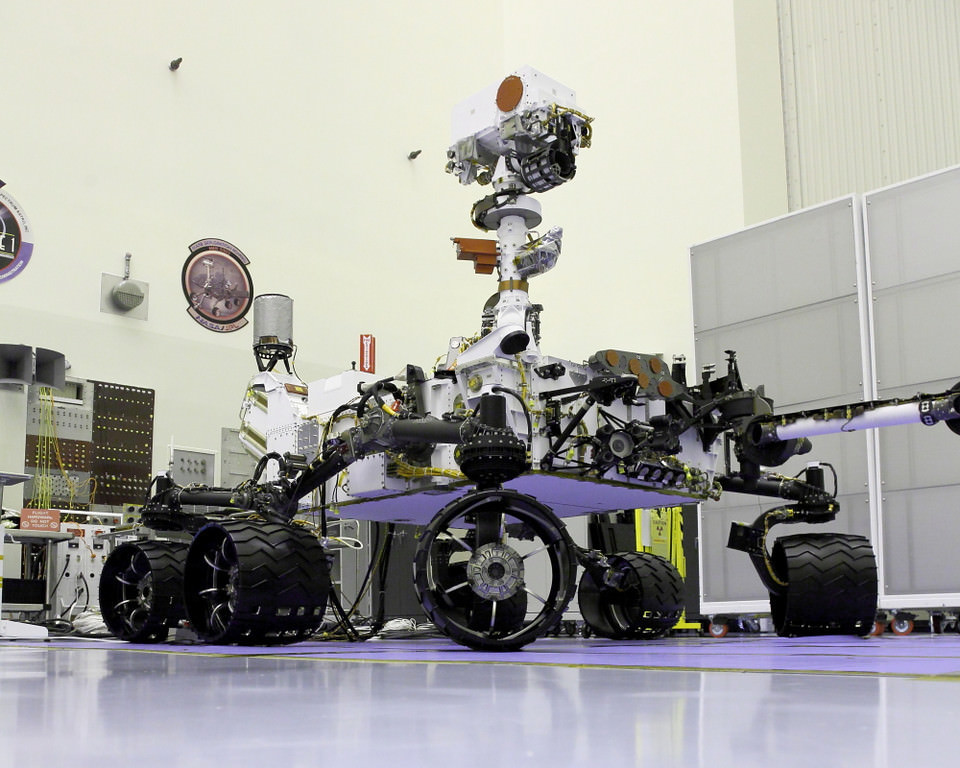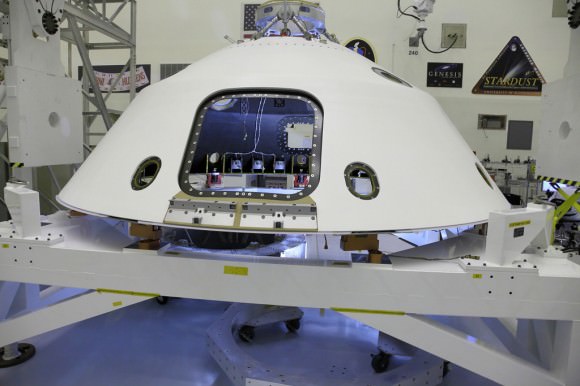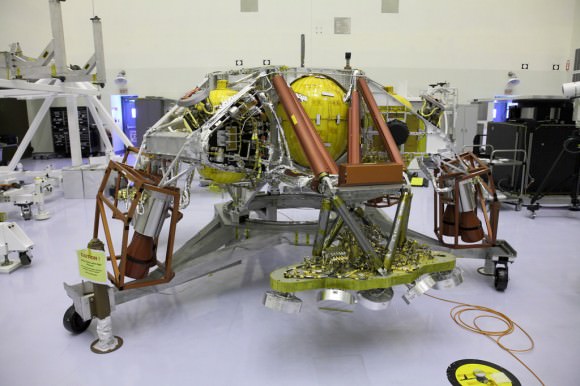In preparation for his jump from from 36,500 meters (120,000 feet) sometime this summer, Austrian skydiver Felix Baumgartner took a practice jump yesterday from Roswell, New Mexico. The Red Bull Stratos Mission just posted the video of the jump — well, actually everything but the jump (you’ll see the preparations and post landing in this video). I’m sure the best footage is being saved for a documentary about the mission that is being done by the BBC and National Geographic. But this taste of the action whets your whistle for the big jump, when Baumgartner could become the first person to go supersonic outside a vehicle. He plans one more test jump, from 27,400 meters (90,000 feet) before attempting the full 36,500 meters to break the record for the longest freefall. According to Red Bull Stratos, the ‘launch window’ for the big jump opens in July and extends until the beginning of October.
JPL’s ‘Muscle Car’ – MSL – Takes Center Stage

[/caption]
CAPE CANAVERAL, Fla. – NASA is experiencing what could be dubbed a “summer of planetary exploration.” With the Juno mission to Jupiter on its way as of Aug. 5, NASA is prepping not one but two more missions – this time to terrestrial bodies – specifically the Moon and Mars.
On Sept. 8 NASA is planning to launch GRAIL (Gravity Recovery And Interior Laboratory). This mirror image spacecraft consists of two elements that will fly in tandem with one another and scan the Moon from its core to its crust. This mission will serve to expand our understanding of the mechanics of how terrestrial bodies are formed. GRAIL will provide the most accurate gravitational map of the Moon to date.

When it comes to upcoming projects that have “celebrity” status – few can compete with the Mars Science Laboratory (MSL) or Curiosity. The six-wheeled rover was part of a media event Friday Aug. 12 that included the “Sky-Crane” jetpack that is hoped will safely deliver the car-sized rover the Martian surface. Also on display was the back half of the rover’s aeroshell which will keep the robot safe as in enters the red planet’s atmosphere.
Numerous engineers were available for interview, one expert on hand to explain the intricacies of how Curiosity works was the Rover Integration Lead on the project, Peter Illsley.
One fascinating aspect of MSL is how the rover will land. As it pops free of the aeroshell, a jet pack will conduct a powered descent to Mars’ surface. From there the rover will be lowered to the ground via wires, making Curiosity look like an alien spider descending from its web. Once the rover makes contact with the ground, the wires will be severed and the “Sky-Crane” will fly off to conduct a controlled crash. Ben Thoma, the mechanical lead on this aspect of the project, described how he felt about what it is like to work on MSL.
MSL is slated to launch this November atop a United Launch Alliance (ULA) Atlas V 541 rocket. If everything goes according to plan the rover will begin exploring Mars’ Gale Crater for a period of approximately two years. In every way Curiosity is an upgraded, super-charged version of the rovers that have preceded her. The Pathfinder rover tested out many of the concepts that led to the Mars Exploration Rovers Spirit and Opportunity and now MSL has incorporated lessons learned to take more robust scientific explorations of the Martian surface.

